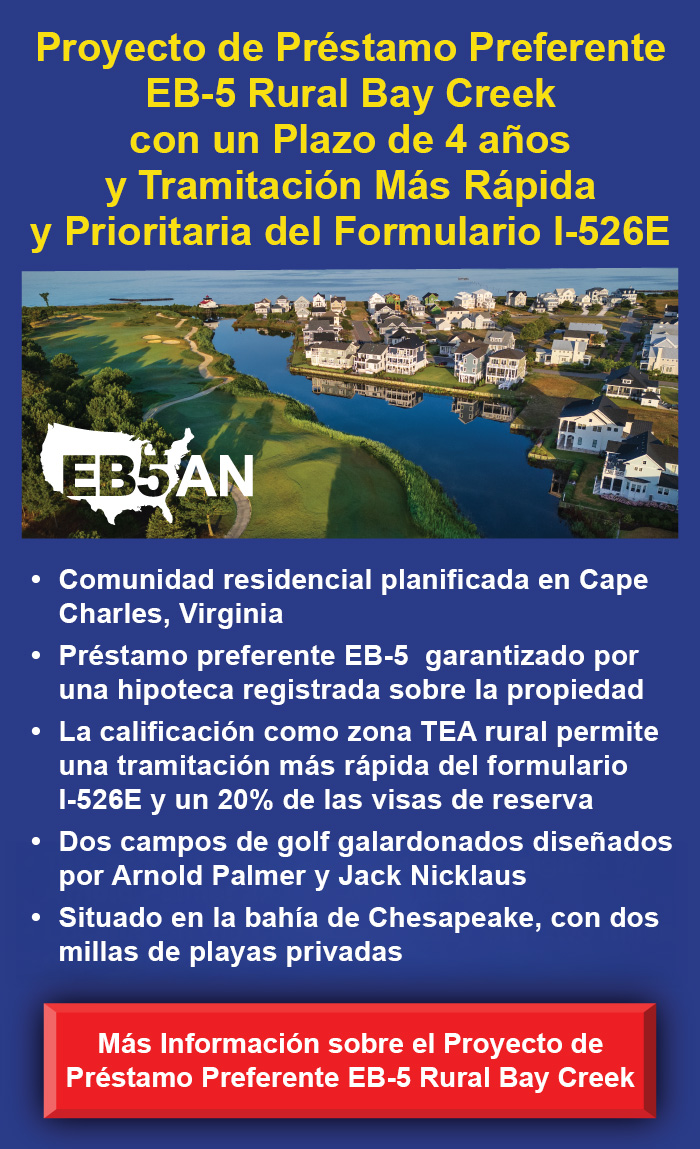EB5AN has added several useful features to its interactive national targeted employment area (TEA) map. The map allows users to immediately see whether a project address is in an area that qualifies as a TEA. While the revised map has several features that make it easier to use, it also allows users to download a free TEA qualification report they can include with their United States Citizenship and Immigration Services (USCIS) filings. To fully appreciate the features and benefits of the new EB5AN TEA map, learn more about the importance of TEA qualification and the TEA qualification requirements.
The Importance of TEA Qualification
One of the key requirements investors must meet to qualify for permanent U.S. residency under the EB-5 visa program is investing the minimum investment amount. This is usually $1.8 million, but to funnel funds to the areas most in need of employment opportunities, or targeted employment areas, Congress halved the minimum EB-5 investment amount for projects in these areas. Therefore, EB-5 investors need invest only $900,000 in projects in TEAs. However, EB-5 investors must prove to USCIS that their investment projects are in areas that qualify as TEAs by submitting a TEA qualification report with their I-526 petitions.
TEA Qualification Requirements Explained
For a project site to qualify as a targeted unemployment area, it must be considered a high-unemployment or rural area. A high-unemployment TEA must have an unemployment rate of at least 150% the national average. A rural TEA must fall outside a city or town with a population of 20,000 people, and it can’t be in a metropolitan statistical area.
USCIS accepts four calculation methods for TEA eligibility, and the project site needs to qualify under only one of these methods. Additionally, the data used must adhere to validity, verifiability, and internal consistency requirements set by USCIS.
Of the four calculation methods, one relates to rural TEA qualification. This method is based on population data drawn from the most recent 10-year U.S. census and data regarding geographical regions released by the U.S. Office of Management and Budget.
The remaining three methods relate to calculating unemployment rates to assess whether an area qualifies as a high-unemployment TEA:
- The ACS calculation method uses census-tract data published in the five-year American Community Survey (ACS)
- The census-share method uses a combination of census-tract data published in the five-year ACS and county-level data published by the Bureau of Labor Statistics (BLS)
- The county-level method uses BLS data for an entire county
Additionally, should a single census tract fail to qualify, census tracts can be combined, subject to certain restrictions. If the weighted average unemployment rate in the combined tracts equals or exceeds 150% of the national average, the combined area qualifies as a TEA.
While these qualification requirements and calculation methods seem simple enough, developing a TEA qualification report—or simply confirming TEA qualification—can be a complex, time-consuming process that requires the help of an EB-5 practitioner. Even finding the correct data sets can be difficult. The EB5AN TEA map simplifies this process.
The EB5AN National TEA Map: Features and Benefits
One of the greatest benefits of the EB5AN TEA map is that it allows users to immediately see whether their project sites could qualify as TEAs—without introducing errors. The TEA map, which covers the entire U.S., has several additional useful features:
- The EB5AN TEA map includes all four calculation methods accepted by USCIS to assess TEA eligibility. There’s no need to toggle between calculation methods: the map automatically shows whether an area qualifies for TEA designation and, if so, under which calculation method or methods it qualifies.
- The automatic census tract combination feature takes the guesswork and tedium out of grouping census tracts.
- Users can download a TEA qualification report within minutes. The report shows the data set and method used for the calculation, and it complies with all USCIS requirements. Users can submit EB5AN TEA qualification reports with their Form I-526 petitions without having to pay additional professional fees.
- The TEA map shows whether the project site is eligible for immediate project sponsorship because it is in the geographic coverage area of one of the 14 EB5AN regional centers, which cover more than 20 states. Around 95% of EB-5 projects secured regional center sponsorship in 2019 because of the benefits of this type of arrangement. These benefits include being able to count direct, indirect, and induced jobs when calculating job creation.
The data underpinning the EB5AN TEA map is always up to date. BLS data is published each April, while ACS data is published each December. EB5AN updates the map twice a year when the new data is released, with the latest data update having occurred in April 2020.
The EB5AN TEA map, available on EB5AffiliateNetwork.com is completely free to use. This includes an unlimited number of address searches and TEA qualification report downloads.


